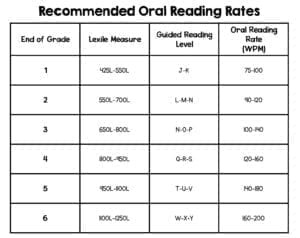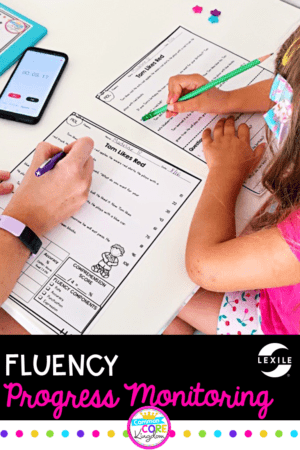Regular reading assessments can seem like a waste of time – especially when they require individual student focus. But when done correctly, assessments that focus on both comprehension and fluency can help you target your instruction more effectively so you can maximize your students’ reading potential. Reading assessments can also provide you with progress monitoring data that will allow you to track student growth and celebrate your students’ success. Improving reading fluency can be groundbreaking for young readers. I learned this first-hand in my own class, and want to share my strategies with you.
When I started teaching over ten years ago, we were required to start the year with more student assessments than I could count. We had to have DRAs completed for each student by a certain date. I remember feeling overwhelmed. DRAs took FOREVER to administer since they required testing every student individually. And it felt like a waste because, at the time, I had no clue how to use the results effectively.
Eventually, a few years later, we were no longer required to administer DRAs. I was super excited because I could have the time back to actually teach rather than assess my students.
However, I quickly realized that, without the DRA assessments, I had no way to assess my students’ reading levels or monitor their progress.
I realized it was vital for my students to have regular fluency and comprehension assessments. That’s when I decided to create my own fluency and comprehension checks. Regular fluency and comprehension checks are important for progress monitoring. They can be completed very quickly and can help teachers guide instruction while students track their progress.
Reading fluency is the ability to read easily and accurately.
Fluency is composed of three key elements:
Research shows fluency is directly related to comprehension. For students to become proficient readers, they must be able to read fluently so they can pay attention to text meaning.
Some students, many who are avid readers by choice, learn fluency on their own. Other students need explicit teaching to develop fluency skills. If your student’s fluency is not improving, these are the methods you can integrate into your teaching:

Self-Correction (SC) – When a student realizes his or her mistake and corrects it. This is not marked as an error.
Repetition (R) – When a student repeats a word, phrase, or line. This is not marked as an error.
Improving reading fluency requires a continued effort. I recommend monitoring progress for fluency once per month. For students who are below grade-level expectations, I recommend a fluency check more frequently. Once students are reading well above grade level with superior fluency, this skill can be assessed less frequently because their levels will not change as drastically or frequently.
I have created fluency packets for 1st-5th grade to help teachers easily track reading level and fluency progress. This makes it easy for you to have all of the passages you will need for the entire year in one place! All passages have certified Lexile measures, which helps ensure you are tracking progress accurately and using the ideal reading level for each student.
I recommend you create a binder with all of the leveled passages. Assemble them in order, putting them in clear plastic pockets so you can reuse the student pages over and over.
If the majority of your students are reading on grade level, the passages for your respective grade-level will be all you need for the entire year (1st grade, 2nd & 3rd grade, 4th & 5th grade); however, if your class is like mine and you have a wide range of reading levels, the bundle may be best for you.
For students who struggle with fluency, I recommend you give them a hard copy of the passage you used to assess them. Have the student practice reading the passage silently, out loud to themselves, out loud to peers and family, and even record themselves reading. Have students time 3 readings to see if their reading fluency is improving. At the next fluency progress monitoring check, have the student share their progress with you.
*For assessment and progress monitoring purposes, I always recommend a new text the student has not seen. This will provide you with a more accurate reflection of their reading fluency and whether they are improving.
I’d love to see how this works for you! Let me know your comments and suggestions, and I’d love to hear how it works in your classroom or even see photos of you using fluency activities in your class!

We strive to create resources that empower teachers and transform student success. We create skill-focused resources that promote critical thinking, enhance student engagement, and incorporate diversity. Our goal is to develop the tools teachers need to reach their students and foster a lifetime of learning.

